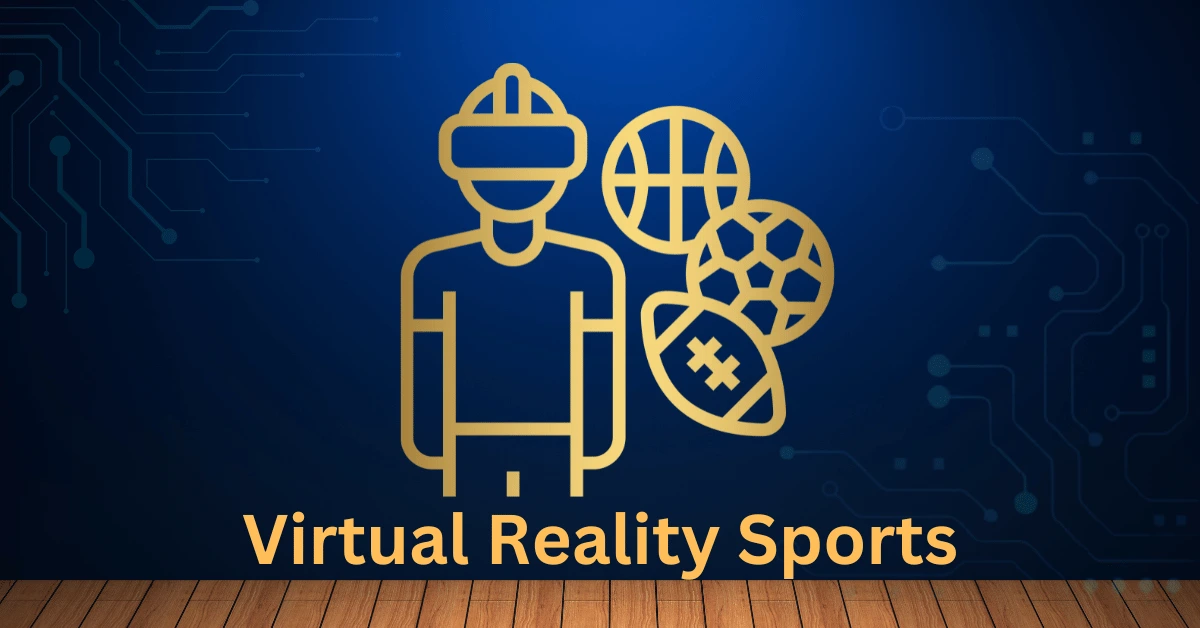Virtual Reality Sports | Perfect Blend of Fitness and Fun
Published: 18 Mar 2025

What if you could step into LeBron James’ shoes or train like Serena Williams—all from your couch? Virtual reality sports are turning science fiction into reality. Virtual Reality sports combine VR technology with sports activities, creating immersive and interactive experiences.
How Virtual Reality is Changing Sports
The shift from traditional training to VR: Traditional sports training methods often involve repetitive drills, physical wear and tear, and limited real-time feedback. Virtual Reality (VR) offers a new dimension to sports training by providing a controlled, immersive environment where athletes can practice and refine their skills without the risks associated with physical training. VR simulations allow athletes to experience game scenarios, improve decision-making, and receive instant feedback, making training more efficient and effective.
Benefits:
- Risk-Free Injury Practice: Athletes can practice without fear of injury.
- Instant Feedback: Immediate analysis and improvement suggestions.
- Enhanced Muscle Memory: Repetitive VR drills help build muscle memory.
- Cost-Effective Training: Reduces the need for physical resources and equipment.
- Psychological Preparation: Athletes can mentally prepare for high-pressure situations.
Immersive Fan Experiences
How VR creates new ways to watch sports: Virtual Reality (VR) is transforming how fans experience sports by offering immersive, interactive, and engaging ways to watch their favorite events. With VR, fans can feel like they are part of the action, even from the comfort of their homes.
Examples:
- NBA’s VR Courtside Seats: Fans can enjoy a courtside view of NBA games, feeling like they are sitting right next to the action.
- F1 VR Races: Fans can experience the thrill of F1 races by virtually “sitting” in the driver’s seat, gaining a unique perspective of the race.
Virtual Reality Esports – The New Arena
Virtual Reality (VR) esports are unique because they combine physical activity with gaming. Unlike traditional esports, where players control characters using keyboards and controllers, VR esports require players to use their entire body. For example, in a VR tennis game, players must physically swing a virtual racket, which adds a level of physical engagement and realism that traditional esports cannot match.
Comparison Table:
| Feature | Traditional Esports | VR Esports |
| Control Method | Keyboard, mouse, controllers | Full body movement, VR controllers |
| Physical Engagement | Minimal physical movement | High physical activity and immersion |
| Equipment Required | Gaming PC, monitor, keyboard, mouse | VR headset, motion sensors, controllers |
| Gameplay Experience | 2D screen, limited depth perception | 3D immersive environment |
| Audience Interaction | Watching on a screen | Potential for VR spectator experiences |
Popular VR Esports Games
🥊 Thrill of the Fight: Boxing simulator.
🏓 Eleven Table Tennis: VR ping-pong.
🎮 Echo VR: Futuristic zero-gravity sport.
🎧 Beat Saber: Rhythm-based music game.
VR and University Sports Programs
Enhancing Student-Athlete Performance Universities are embracing Virtual Reality (VR) to boost student-athlete performance by providing immersive training environments. VR allows athletes to practice in realistic scenarios without the physical strain and risks associated with traditional training methods. This technology also offers instant feedback, enabling athletes to refine their skills quickly and effectively.
Stat Highlight: Studies have shown that VR training can enhance reaction times by up to 20%, significantly improving an athlete’s performance on the field.
VR vs. AR vs. Mixed Reality in Sports
| Technology | Definition |
| Virtual Reality (VR) | Full immersion in a virtual environment, blocking out the physical world. |
| Augmented Reality (AR) | Overlays digital content on the real world, enhancing real-world experiences. |
| Mixed Reality (MR) | Blends real and virtual worlds, allowing interaction with both physical and digital elements. |
Real-World Applications
📱 AR Fan Apps: Enhance stadium experiences with interactive overlays, like Pokémon Go-style games at sports events.
⚽ MR Coaching Tools: Use mixed reality to display digital stats and play-by-play analysis on the real field.
🎥 VR Training Simulations: Provide immersive training environments for athletes, reducing the risk of injury.
Virtual Reality Marketing for Sports
How brands use VR for hype: Brands are leveraging Virtual Reality (VR) to create immersive and captivating marketing campaigns that engage fans like never before. By offering unique VR experiences, they generate buzz and excitement around their products and events, fostering deeper connections with their audience.
Example List:
- Red Bull’s VR Skateboarding Experiences: Fans can experience virtual skateboarding adventures, making them feel like professional skateboarders.
- Nike’s VR Fitness Challenges: Nike uses VR to create interactive fitness challenges, encouraging users to test their limits and compete with others.
- Pepsi’s VR Soccer Ad Campaign: Pepsi’s VR ads put fans in the middle of a soccer game, allowing them to interact with their favorite players.
- Adidas VR Store Tours: Adidas offers virtual tours of their stores, showcasing their latest products and innovations dynamically and engagingly.
Conclusion
Virtual Reality is revolutionizing the way we train, play, and experience sports, offering endless possibilities for athletes, coaches, and fans alike. Embrace the future of sports with VR, and discover new levels of performance and engagement. Try a VR sports app today and share your experience.
FAQ’s
VR simulates training environments without physical contact, reducing injury risks while enhancing skills.
No, VR complements but doesn’t replace traditional training as physical conditioning remains vital.
Sensors and algorithms analyze movements in real time, offering immediate tips for improvement.
Accessing high-quality VR setups and ensuring seamless streaming can pose technical difficulties.
By simulating live events with 360° visuals and surround sound, fans feel part of the action.
VR esports demands physical effort and immersion, unlike traditional gaming’s minimal activity.
While VR reduces equipment costs, initial hardware investments can be expensive for some.
They offer VR training modules for athletes, improving reaction times and decision-making.
Immersive storytelling and interactive experiences engage audiences more effectively.
Yes, advancements like Mixed Reality (MR) and AI will make VR more sophisticated and user-friendly.

- Be Respectful
- Stay Relevant
- Stay Positive
- True Feedback
- Encourage Discussion
- Avoid Spamming
- No Fake News
- Don't Copy-Paste
- No Personal Attacks

- Be Respectful
- Stay Relevant
- Stay Positive
- True Feedback
- Encourage Discussion
- Avoid Spamming
- No Fake News
- Don't Copy-Paste
- No Personal Attacks





